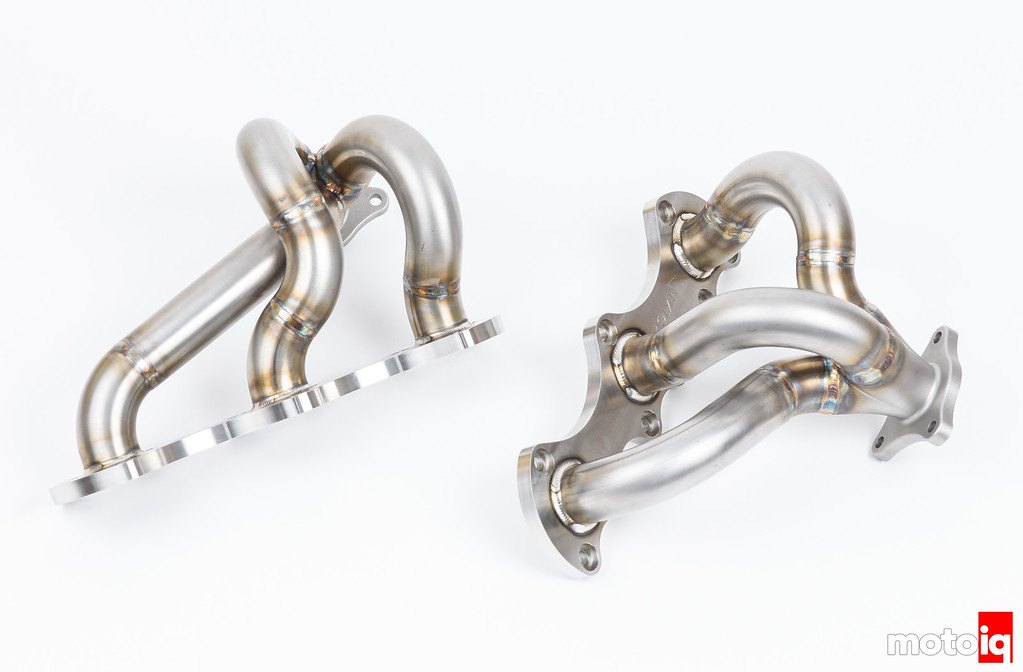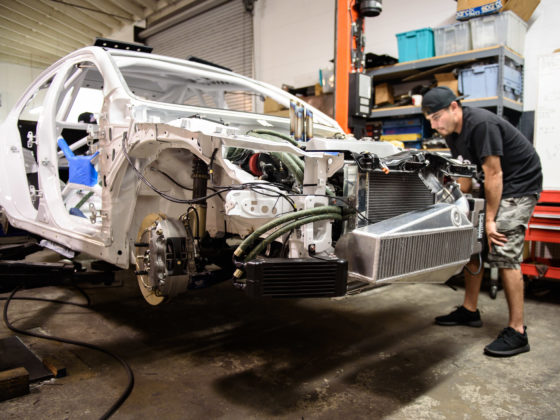The collector has a smooth low-turbulence merging junction for all of the primary tubes flow and has the tubes merge in the order that provides maximum separation between cylinders on the exhaust cycle and overlap in the firing order. This reduces the chances of reversion from a high-pressure exhaust pulse back-contaminating a cylinder on overlap.


Backpurging can increase the fatigue strength and crack resistance of a weld in a tube by as much as 50%. All welded junctions and merges are hand ported during the fabrication process to ensure perfectly smooth joints.

Having brand new fresh gaskets with your headers is very convenient and means you don’t have to source this stuff at the last minute when installing the headers. Porsche claims the gaskets are reusable, but in the words of Vektor Performance principal, “I never get a warm fuzzy feeling installing used gaskets, so we will include new gaskets with our product.”

We love the World Motorsports dyno for doing super accurate tests on Late Model cars with highly adaptive ECUs. The super high airflow and the ability to carefully control engine and intake air temperatures help us get consistent results quickly.
The World Motorsports dyno is also probably the best dyno in California for tuning for these reasons as well. We would recommend their facilities over any other in our area for serious testing and tuning work.




6 comments
After admiring Porsche’s from afar for years and pretty much driving every Porsche made from the 60-90’s my thought has always been work harder and save up for the Turbo model. But since every model is now turbo like you point out and with the aftermarket coming to the rescue like these Vecktor headers it doesn’t seem that thought it really as valid anymore. Porsche’s in particular are known to be one of those cars that aftermarket parts often make less hp than stock so it’s great to see the opposite.
The 991.2 turbo is in another world compared to the 991.2 carrera.
You’re going to spend a ton of money to get the 3.0L to the 3.8L level.
I’ve heard from monstaka (french tuner) that catless pipes made a huge difference on their 510hp 991.2 S.
The base Carrera does start $70k below the base Turbo. Suppose you start with the Carrera GTS which has the biggest turbos and is $40k cheaper than a base Turbo. A tune alone on 93 octane bumps up the power 19%, or just short of the Turbo.
The biggest exhaust restrictions on the 911s are the headers and cats. On the stock tune, there’s not much to be gained with an exhaust, but they may be different with a tune. Add in headers to the tune on a GTS and it should be right at Turbo power. So basically for about $5k. Granted, your warranty is probably gone. The GTS does weigh about 200lbs less than the Turbo. Add some high flow cats and intercoolers for even more power. I’d guesstimate another 30whp or so.
I agree, Porsche aftermarket parts, as well as other exotic and semi-exotic cars, often have poorly engineered and validated performance parts that are both expensive and not performance enhancing. Sometimes they are poorly made as well. I have been surprised that the parts for Japanese cars for instance from reputable manufacturers are often made better and perform better. These Vektor Performance headers are impressive however in construction quality, engineering, and performance increase. I would really like to add a cat back and an access port to these. A few tweaks and you could probably get a Carrera to easily give the high buck Turbos and GT3’s the business.
With pure bolt-ons (exhaust, headers, ICs, hybrid turbos), E85, and COBB AccessPort, it’ll do over 600whp. Figure you buy a base model off lease for ~$70k, you can have a 600whp Turbo beating car for under $90k.
From what I understand the engine is very reliable at this power level as well.